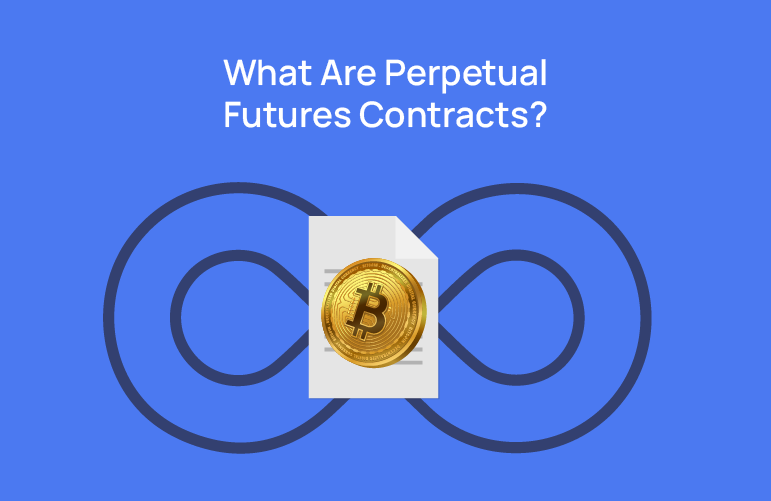Perpetual futures are financial contracts that are innovating the world of cryptocurrency trading. These contracts never expire in contrast to the regularly traded future contracts, which have a set expiration date. This indeed is a unique feature, highly attractive to traders who wish to hold their positions without being confined to a definite timeline. This structure also aligns with perpetual trading, helping traders stay flexible while managing positions efficiently.
The positions allow for infinite holding, hence maintaining a continuous view of price developments. This flexibility became a very favorable characteristic for crypto traders, allowing a new take for them to conduct trading strategies and risk management using perpetual contracts.
Introduction and Emergence of Continuous Futures
BitMEX was the first cryptocurrency exchange to offer perpetual futures, a format that paved the way for perpetual contract trading. Before that, people relied on classic futures, which expire, usually involve a lot of rollovers, and create settlement headaches. Hence perpetual swaps were designed to completely get rid of all that, and now they solve these issues perfectly well.
Perpetual futures have picked up quite a lot of popularity over the years, with many new crypto exchanges adopting them. Their unique feature—no expiry date and the use of funding rates to maintain price parity with the spot market—has made them a standard requirement for every modern crypto trading expert. This includes newer formats like crypto perpetual futures and perpetual crypto futures, which are widely used today.
Key Features and Mechanisms of Perpetual Futures
It is pertinent to note that perpetual futures contract prices remain close to the price of the underlying asset. The funding rate ensures that the contract price stays aligned with the spot price. This funding rate—paid between periodic long and short positions—acts as an incentive for traders to maintain parity between the contract and the underlying market.
Another very important feature of perpetual crypto futures is leverage. With leverage, the exposure to the underlying asset can be magnified if traders borrow funds to maximize probable profits (or losses). This double-edged feature requires careful risk management.
Perpetual futures are also commonly interchanged with the term perpetual swaps, and both function similarly. Many traders often ask what are perpetual swaps and how do perpetual swaps work, since their features mirror perpetual futures but apply specifically to the crypto market. Some platforms also offer crypto perpetual swaps and advanced instruments like bitcoin perpetual swaps.
Understanding Funding Rates
The funding rate mechanism keeps perpetual futures stable. It’s basically a small charge between longs and shorts to maintain a price level that corresponds to the spot market.
If a contract is trading above the spot price, the funding rate turns positive, and long positions pay short positions. If the contract is trading below the spot price, the funding rate goes negative, and shorts pay longs.
It creates a balance in the market and allows traders to take positions that help the contract price converge to the spot market. The funding rate is calculated typically at 8-hour intervals, although the duration may vary across exchanges.
Leverage: Magnifying Profits and Losses
Probably one of the most attractive features of perpetual futures is the capability to trade with leverage. Added leverage enables an individual to increase position size much beyond their capital. For example, leveraging 10x allows opening a $10,000 position with just $1,000.
While leverage can exponentially increase gains, it equally amplifies risk. This requires strong risk management practices—such as stop-loss orders and limiting leveraged positions—to sustain long-term trading resilience.
Difference between Perpetual Futures vs. Traditional Futures
Perpetual Futures
- No expiry date: traders can hold positions indefinitely
- Cash-settled; no physical delivery involved
- No need to roll over contracts, reducing cost and effort
- Uses funding rates to keep prices aligned with the spot market
- Long and short positions available at any time
- Funding rates fluctuate with market demand, influencing trader behaviour
Traditional Futures
- Fixed expiry date: contracts must be settled or rolled over
- Settlement can be physical or cash-based
- Requires constant monitoring of expiration and rollovers
- No funding rate mechanism; price alignment relies on expiration
- Long and short positions available, but with expiry constraints
- Market prices influenced by expiry cycles, interest rates, and contract demand
Read More: Differences Between Perpetual Futures Contract and Regular Futures Contract
Why Trade Perpetual Futures Contracts on Pi42?
Pi42 is a new-age platform in the world of perpetual futures, offering advanced tools and features that traders rely on to unlock their full potential.
User-friendly interface: Pi42 makes it easy to analyse and place trades efficiently—ideal for beginners and experts.
Advanced Trading Tools: Real-time charting, customizable trading options, and analytics support all levels of trading strategy.
Security: Pi42 prioritizes user fund safety with strong security measures.
24/7 Customer Support: Round-the-clock support ensures traders can resolve queries at any time.
Use Cases
Use Case 1: Capitalizing on Short-Term Volatility
Perpetual futures are perfect for traders looking to benefit from short-term price movements in crypto. Leverage and long/short flexibility allow traders to maximize profitable opportunities during volatility. Short-term traders frequently use them for both day trading and swing trading strategies.
Use Case 2: Hedging Existing Crypto Holdings
For crypto holders, perpetual futures are a powerful tool for hedging. By taking a short position in perpetual futures, traders can protect portfolios without selling their holdings. For example, a trader holding BTC can use perpetual futures contract shorts to hedge against potential downturns. This ensures protection from falling prices while still holding long-term assets.
Conclusion:
Perpetual futures have revolutionized the crypto trading landscape due to their unmatched flexibility and strategic potential. Their unique characteristics—no expiry, leverage, and funding mechanisms—enable diverse trading opportunities.
Whether you’re a short-term trader capturing volatility, a long-term holder hedging your positions, or an arbitrageur exploiting price differences, perpetual futures offer a powerful and adaptable instrument.
Understanding the mechanisms behind perpetual futures and building sound strategies is essential for long-term success. Platforms like Pi42 provide the tools and support to thrive in the fast-paced crypto derivatives market.
Crypto Reads You’ll Love
Difference Between European Options vs American Options in Crypto
Option Greeks Explained in Crypto: Delta, Gamma, Theta, Vega, Rho
How To Select Coin For Crypto Futures Trading Strategy
What is Contract Trading in Crypto? How Does it Work?

